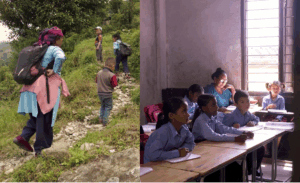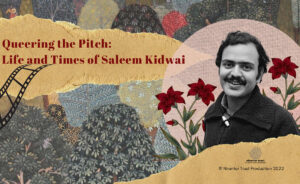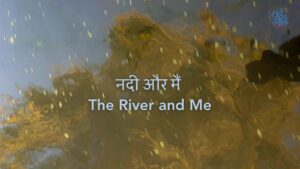The Third Eye’s Learning Lab is an arts-based pedagogical platform where we come together to critically examine our own standpoints, to help us further engage and question the systems of knowledge that shape us.
Dialogue or conversation is the medium of learning; image, sound and text are the forms we express in, and the digital is our tool. At the centre are our mentees, the Digital Educators (DEs), who lie at an intersection of age, gender and caste locations, from districts in Uttar Pradesh, Rajasthan and Jharkhand. Rooted in community based organizations, the DEs bring tremendous diversity and depth of experience.
Using digital technology (like mobile phone cameras and zoom recorders), the Learning Lab is a co-creation process, an attempt to discover and document the everyday, from a feminist lens. It explores the potential power of narratives to invert hierarchies and influence a new way of looking at the world. Shaped through enquiries into the self and the realities it is embedded in, in this pedagogy, image, sound, text and conversation are fundamental elements of exploration, discovery, and self-articulation.
The Learning Lab is mentored by documentary filmmakers, image makers, podcasters, feminist researchers and activists.
What does the night hold for us? What is concealed in the darkness, overlooked and therefore unregistered and forgotten? What’s comfortable, what is not? Who is outside? Who is not? The first time the idea of recording the night was floated to the DE’s was during a workshop in Delhi, where on a cold November morning in 2021, the DE’s were asked:
What is it we can see at night? What is it that happens at night that reveals something new to you about where you live?
They sent us a dictionary for the night.
“सन्नाटे”
“ छछुंदर”
“ झिगुर”
“ साय-साय की आवाज़”
“अपने अंदर की घबराहट की आवाज़”
“अपनी खुद की सांस”
“लकड़ी में लगे कीड़े”
“गलियों में गूंजती सन्नाटे”
“ कुत्ते”
“घड़ी की टिक-टिक”
“गाड़ी”
“हवा के झोके”
“खर्राटे”
“पड़ोसियों के घर”
“बल्ब की लाइट की आवाज़”
“घर के उपकरण”
“चेयर”
“पैदल चलना”
So then, the natural next step was to step out into the night and record it.
For the women in the group (a large majority), stepping out at night was out of the question. But the fact that they had to shoot only at night, teased out a certain mobility which was disallowed to them. They spoke about how odd and free they felt roaming around on their streets in darkness, because the camera and tripod justified, and lent a certain power to their presence. For many others, especially the younger ones, it was a hard negotiation. How can a young man and woman, single and from different castes, venture out alone to work at night? (So, they managed to convince their whole office to go with them on their night shoot as they filmed empty bus stands, night guards and waiting trucks).
Filming the night, an inward and outward looking process, was as much about attempting a visual record of that which is unseen, unexplored or generalised, as it was about pushing the boundaries of one’s self to step out and ‘look’, ‘work’, ‘create’ at a time that is, by itself, an invitation to break with boundary.
Some gravitated to the idea of nocturnal work; some were pulled into the personal. And sometimes, the very idea of stepping out was a brush with the unknown.
Extensive individual mentoring and discussions pushed the ideas more. For instance, for women in Meharoni (Badi Rajkumari, Choti Rajkumari and Arti), venturing out at night in itself was an adventure, but how to shoot in public was a bigger concern. How to not draw too much attention to oneself? We discussed many scenarios – for instance, how would you shoot a police chowki at night? What happens if this is shot from far? How will spending time help, if at all, to make us feel comfortable? These kinds of exchanges are not just to ‘tackle’ a shooting situation. It is to go deeper into our own understanding of how our own centering can directly impact the narratives we create. The reasons behind our discomforts – tactile and conceptual, as well as historic (because of our gender, caste and religious locations) need unpacking so that we can ‘see’ and frame clearly, within our own skin.
Eventually, the footage that came in, reflects their comforts, discomforts, as well as a quiet resistance to what is allowed. A Dalit woman shoots a booze shop in Uttar Pradesh. A Muslim man shoots relentless stone mining in Jharkhand. What the night hides, is also what the night reveals.
More than arriving at a film, for us, Raat was a process of understanding and internalizing that time, and the act of claiming it for oneself, is a political act. Negotiating our realities within the everyday, is a political act.
CREDITS:
A FILM BY
Arti Ahirwar, Ashraf Hussain, Rajkumari Ahirwar, Vikas Khatri, Tabassum Ansari, Kulsum Khatoon, Khushi Bano, Parmeshwar Mandrawaliya, Santra Chaurthiya, Rajkumar Prajapati, Manisha Chanda, Anita Sen, Rani Devi, Ajfarul Shaikh
PROJECT MENTOR Ruchika Negi
PRODUCER TTE Learning Lab, Ruchika Negi, Dipta Bhog
PRODUCER The Third Eye, Shabani Hassanwalia, Shivam Rastogi
EDITOR Abhinava Bhattacharyya
TECHNICAL, VISUAL & STORYTELLING FACILITATORS Abhinava Bhattacharyya, Madhuri Adwani
SOUND DESIGN Abhishek Mathur




